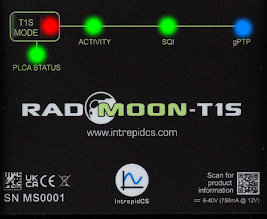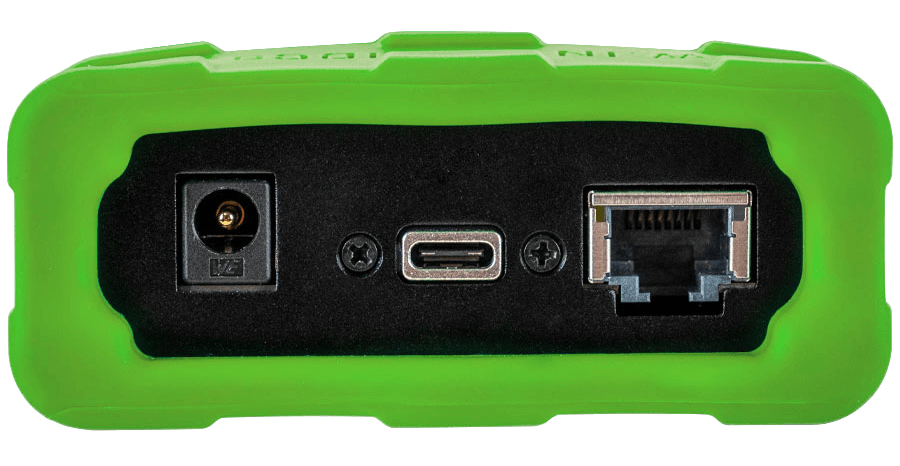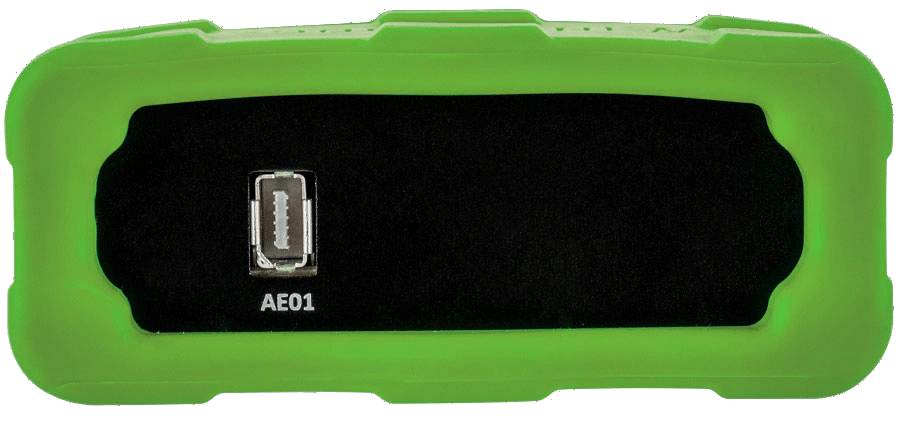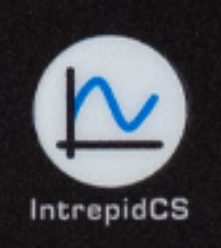3. A Tour of RAD-Moon T1S Hardware
3.1. Label and Status Indicators

3.1.1. 10BASE-T1S Status Information
The status of the 10BASE-T1 port is displayed in the 5 LEDs seen above.
LED |
Color |
Indication |
T1S MODE |
|
PLCA Coordinator |
|
PLCA Follower |
|
|
Multiple Node IDs Assigned |
|
|
CSMA/CD Mode |
|
ACTIVITY |
|
Frame Transmitted |
|
Frame Received |
|
|
Error (e.g. Bad CRC, PLCA error) |
|
SQI |
|
BER > 10e-10 |
|
BER < 10e-10 |
|
|
||
gPTP |
|
Disabled |
|
Solid - Leader |
|
Slow Blink - Follower (Not Locked) |
||
Fast Blink - Follower (Locked) |
||
PLCA STATUS |
|
BEACON present |
|
Collision |
|
|
Jabber |
|
|
Unexpected BEACON |
|
|
Empty Cycle |
|
|
RX in Transmit Opportunity |
10BASE-T1S SQI
Note that SQI measurements on 10BASE-T1S networks require network traffic to be present.
3.1.2. Bootloader Mode
You may see all the LEDs on the top label flashing synchronously. This means the device is in bootloader mode, which should only happen when flashing the device’s firmware. If this is observed unexpectedly or following a firmware update, please contact customer support for assistance.
3.2. Connector Interfaces
3.2.1. Power/USB/1000BASE-T Interfaces

Barrel Jack (Left):
The device can be powered using a DC supply between 5.5-40V volts with a minimum power of 10 Watts. Using a power supply that does not meet these requirements may cause the device to malfunction or be permanently damaged.
USB Type C (Center):
This serves as a connection to a host computer for configuration, firmware updates, and PHY register access.
Note
RAD-Moon T1S cannot be powered by the USB connection.
Ethernet (Right)
The industry standard RJ-45 Ethernet jack is a 100/1000BASE-T port that can be bridged to the 10BASE-T1S port or used independently for sending and receiving Ethernet traffic with Vehicle Spy 3 software or an application written using Intrepid’s Open Source API .
Vehicle Spy, an coremini script or an application wrote with Intrepid’s Open Source API
Link LED (Green): Indicates that a valid link has been established between your device and another 100/1000 Ethernet device.
Activity LED (Orange): Flashes when traffic passes in either direction over the attached Ethernet cable.
In normal operation you should see the Link LED always on, and the Activity LED flashing at a variable rate, with faster flashing meaning that more data is being transferred.
3.2.2. 10BASE-T1S Interface

The IX connector on this end of the RAD-Moon T1S contains a single 10BASE-T1S ports that can be bridged to the 100/1000BASE-T port or used independently for sending and receiving Ethernet traffic with Vehicle Spy 3 software or an application written using Intrepid’s Open Source API .
PIN |
FUNCTION |
Cable Color |
1 |
AE_01_P |
white/orange |
2 |
AE_01_N |
orange |
3 |
GND |
– |
4 |
NC |
blue |
5 |
NC |
white/blue |
6 |
NC |
white/green |
7 |
NC |
green |
8 |
GND |
– |
9 |
NC |
white/brown |
10 |
NC |
brown |








 button for 3 seconds. This button
is underneath the Intrepid logo on the bottom/center of the top label.
button for 3 seconds. This button
is underneath the Intrepid logo on the bottom/center of the top label. button cycles
through the configurations of the table.
button cycles
through the configurations of the table.